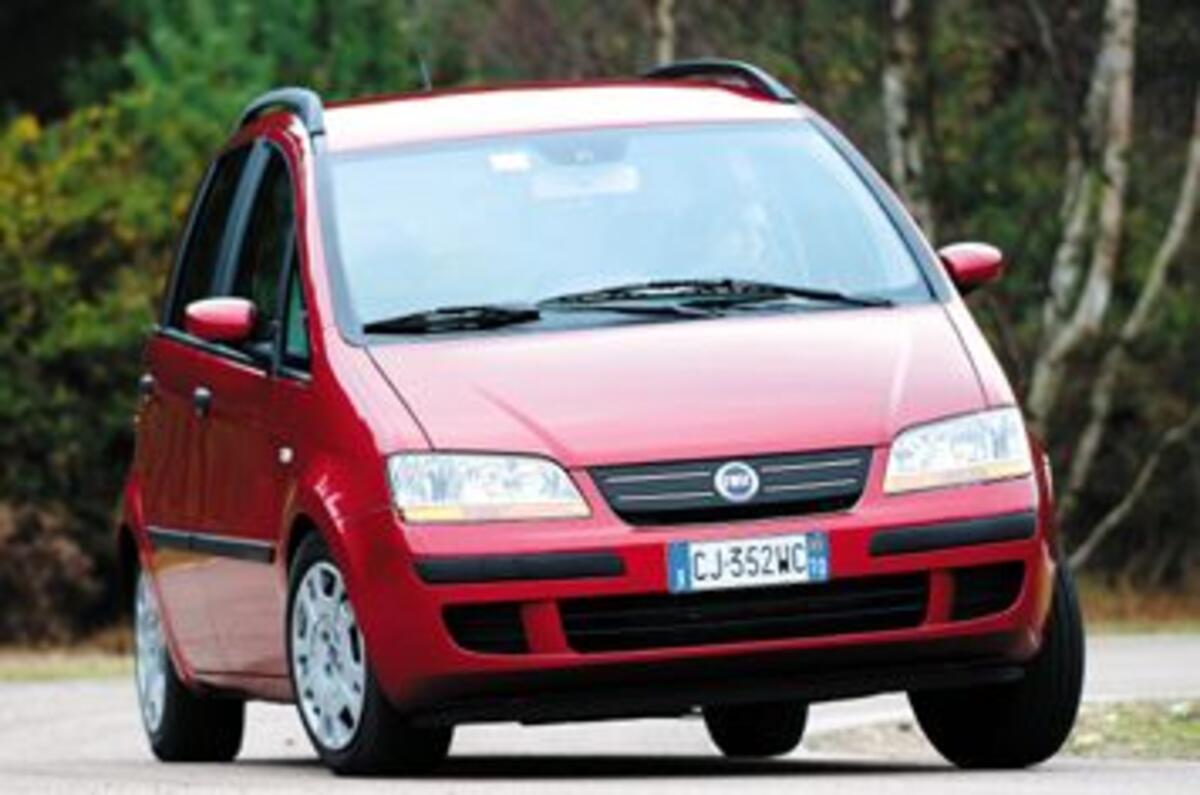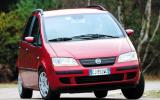Fiat intends to ram home the message that it’s back on form as a builder of mass-appeal small cars. Hot on the wheels of the Panda’s Car of the Year victory, the Idea is sizing up the opposition in the mini-MPV sector. Critically, our's is the Idea’s first test on UK roads – the scene of many a Fiat’s undoing.
The Idea is entering a corner of the market that is crammed with talent, from the stylish Honda Jazz to the cavernous Citroën Berlingo. In between are the Toyota Yaris Verso and the Idea’s key rival, the Vauxhall Meriva. The Idea and Meriva are not a million miles apart in styling, with boxy shapes that maximise interior space. But both manage to avoid looking like crates on wheels, in the case of the Fiat thanks to input from Giugiaro’s Italdesign.
Based largely on the existing Punto platform, the Idea’s wheelbase has been stretched to 2508mm, giving an extra 48mm between the axles. More significant is the extra 180mm of height over the Punto. Not only does this create generous headroom, but it also allows occupants to sit in a more upright position and adds to the interior’s versatility.
Long-legged drivers will find the Idea more accommodating than the Meriva and it is more generous when it comes to shoulder space. Three children can easily fit in the rear, each with their own three-point seat belt, but two is the comfortable limit for adults. Standard safety kit includes Isofix child-seat points, anti-lock brakes and twin front airbags, while side airbags are an option.
To warrant the MPV tag, the Idea’s rear seats slide to balance boot capacity and rear leg space. They also split, fold and tip, but cannot be removed.
Access to the boot is unhindered. There is a large lip, but no wheelarch obstruction. Don’t expect to cram in the whole family’s holiday gear though, as it’s a tight 320 litres with the rear seat back. Tumble the back bench forward and maximum capacity is a respectable 1420 litres. On top of this, the cabin is littered with well-thought-out storage.
Fit and finish of our test car was better than that of a Punto, but some of the cabin plastics don’t match the micrometric perfection found in a Honda Jazz. That said, it felt more than sturdy enough to cope with the battering small children inflict on unsuspecting MPVs.
A central instrument binnacle means that glancing at the dials takes more conscious thought than usual, but at least the gear lever is within easy reach on the dash’s centre console. The five-speed ’box doesn’t have the precise feel of a Jazz’s, but it’s okay because, to make the most of the eager 95bhp 1.4-litre petrol engine (Fiat’s excellent 1.3 Mujltijet turbodiesel will also be available), it’s necessary to really hang on to each gear. The engine’s not perfect for relaxed town driving, but there’s an urgency to it that allows you to dart into gaps in traffic with real Italian brio.
You’ll be able to park in the tightest spots, too, helped by steering that has decent feel and can be lightened at the touch of a ‘City’ button. Parking is made all the easier thanks to minimal overhangs front and rear and excellent all-round visibility.
The Idea is at its best in the city. Leave the bright lights behind and it lacks the composure of a Meriva on the motorway. Front-seat passengers are treated to a supple ride, but those in the back are at the mercy of mangled surfaces as the torsion beam-suspended rear wheels skip from one imperfection to the next.















Add your comment